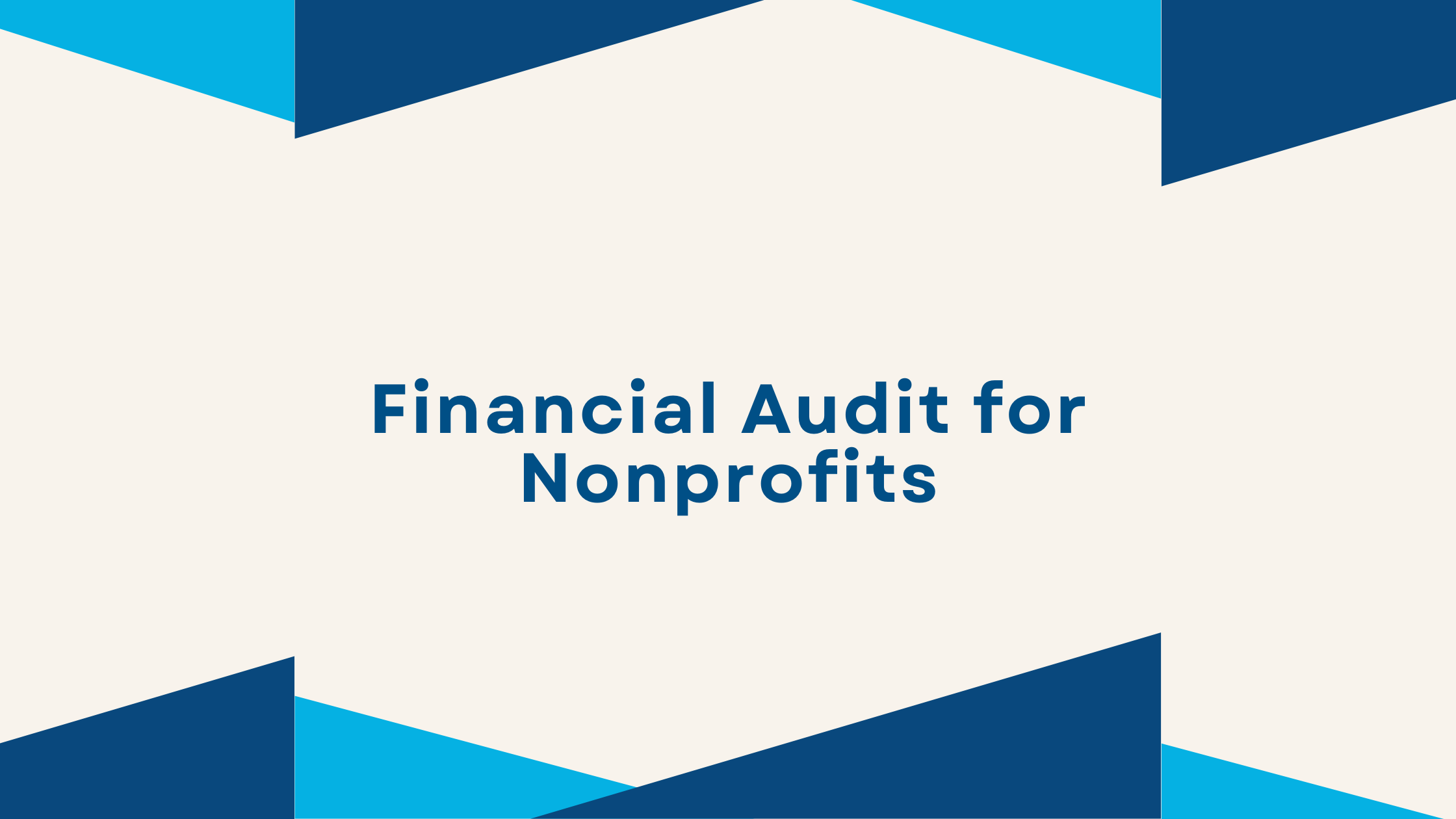In the nonprofit sector, financial audits are not just regulatory obligations—they’re strategic opportunities. A clean audit can validate your internal controls, reassure funders, and strengthen your organization’s financial standing. For nonprofit executives, preparing for and managing an audit successfully requires foresight, transparency, and alignment across departments.
This guide will walk you through what financial audits are, why they matter, and how to ensure your next audit not only meets compliance standards but strengthens your nonprofit’s credibility and financial practices.
Services
Explore our Nonprofit Bookkeeping and Accounting services – Empowering your nonprofit’s mission through expert bookkeeping and accounting services, ensuring financial clarity and compliance so you can focus on making a difference.
What Is a Financial Audit?
A financial audit is an independent, objective evaluation of an organization’s financial statements and related processes. Conducted by a certified public accounting (CPA) firm, the audit confirms whether the financial records accurately reflect the organization’s financial position in accordance with generally accepted accounting principles (GAAP).
There are three primary types of financial reviews for nonprofits:
-
Audit (highest level): Provides assurance that financials are free of material misstatement.
-
Review: Offers limited assurance based on inquiry and analytical procedures.
-
Compilation: Presents financial data without assurance; typically used for internal purposes.

When Is a Financial Audit Required?
Not all nonprofits are legally required to undergo an audit, but several factors may trigger the need:
-
Annual revenue threshold set by your state
-
Grant requirements from federal, state, or private funders
-
Organizational policy or board mandate
-
Donor expectations for transparency and accountability
For example, nonprofits receiving $750,000 or more in federal funding annually are subject to a Single Audit under Uniform Guidance. Similarly, many states require audits for charities that surpass a certain revenue or contribution threshold.
Key Benefits of a Successful Audit
Beyond compliance, a financial audit offers a range of strategic advantages:
-
Strengthened Credibility: Demonstrates transparency and fiscal responsibility to donors, funders, and regulators.
-
Improved Internal Controls: Identifies weaknesses in procedures and offers recommendations.
-
Board Confidence: Enables informed oversight and strategic financial planning.
-
Grant Eligibility: Many foundations and government programs require audited statements.
-
Risk Mitigation: Detects early signs of fraud, mismanagement, or accounting errors.
A positive audit can become a public relations asset—featured in your annual report, donor updates, or funding proposals.
Preparing for a Financial Audit: Executive Checklist
Preparation is crucial. Nonprofit executives must ensure that finance teams and internal systems are audit-ready well before auditors arrive.
1. Select the Right Auditor
-
Choose a firm experienced in nonprofit audits.
-
Check references and ask for sample audit reports.
-
Confirm independence and proper licensing.
2. Understand the Scope
-
Clarify the type of audit (financial, compliance, or Single Audit).
-
Review the engagement letter outlining audit scope, timeline, and responsibilities.
3. Organize Key Documents
Ensure the finance team has quick access to:
-
Trial balance
-
General ledger
-
Bank reconciliations
-
Accounts payable and receivable
-
Payroll records
-
Grants and donor restrictions
-
Fixed asset schedules
-
Board meeting minutes
-
Prior year audit findings (if applicable)
4. Prepare Your Team
-
Assign an internal audit coordinator.
-
Hold a pre-audit meeting to review expectations and responsibilities.
-
Communicate timelines to all departments involved.
5. Review Internal Controls
-
Document all key financial processes (procurement, expense approval, payroll).
-
Ensure segregation of duties is in place to prevent conflicts of interest.
During the Audit: What to Expect
The audit process is typically divided into three phases:
Planning
-
Auditors gain understanding of your operations and internal controls.
-
Risk areas are identified.
-
Preliminary requests for documents are issued.
Fieldwork
-
Auditors test financial transactions and compliance.
-
Interviews may be conducted with staff.
-
Internal controls are examined for effectiveness.
Reporting
-
Findings are compiled into an audit report.
-
Management letters may include suggestions for improvements.
-
Board members and executive leadership are usually briefed on the results.
Post-Audit Steps and Follow-Up
1. Review the Audit Report Carefully
-
Address any findings or deficiencies noted.
-
Share key outcomes with the board and finance committee.
-
Determine if corrective actions are needed.
2. Respond to Management Letters
-
Provide written responses for each recommendation.
-
Outline actions taken or planned, including timelines.
3. Communicate Results Externally
-
Include audit highlights in annual reports and donor communications.
-
Upload the final audit to your website or GuideStar profile for transparency.
4. Improve Systems Based on Feedback
-
Invest in staff training, software upgrades, or new policies as needed.
-
Track progress on auditor recommendations throughout the year.
Common Pitfalls to Avoid
-
Poor Documentation: Incomplete or inconsistent records slow down audits and trigger findings.
-
Late Preparation: Waiting until the last minute creates unnecessary stress and errors.
-
Lack of Internal Review: Executives should conduct a pre-audit review of financials and policies.
-
Failure to Address Past Findings: Repeat issues can raise red flags for auditors and funders.
Best Practices for Long-Term Audit Success
-
Conduct internal reviews quarterly to ensure audit readiness.
-
Maintain updated policies and procedures manuals.
-
Rotate audit firms every 5–7 years to ensure objectivity.
-
Provide ongoing professional development for finance staff.
-
Schedule an annual board training on audit and financial governance.
Final Thoughts
For nonprofit executives, a successful financial audit is both a compliance milestone and a strategic advantage. With proper planning, strong internal systems, and board involvement, audits can become opportunities for growth—not just obligations. Use them to reaffirm your organization’s commitment to integrity, transparency, and fiscal responsibility.




